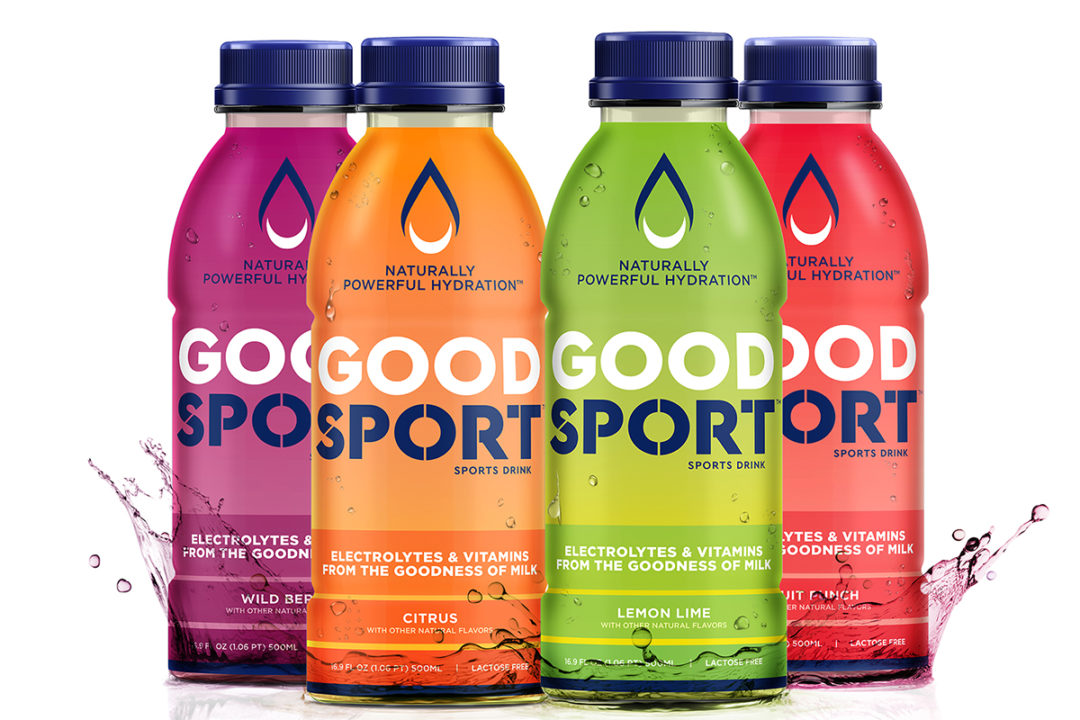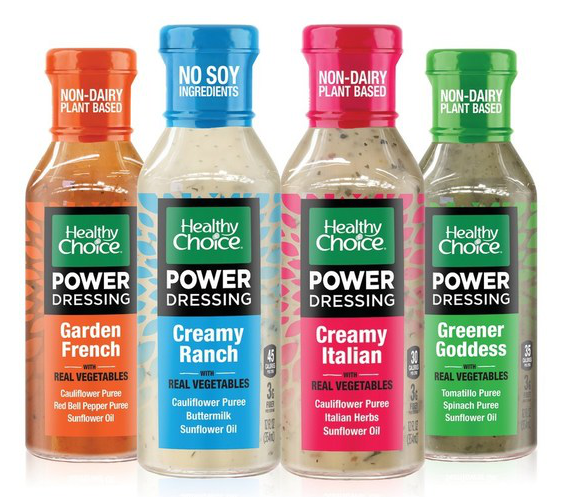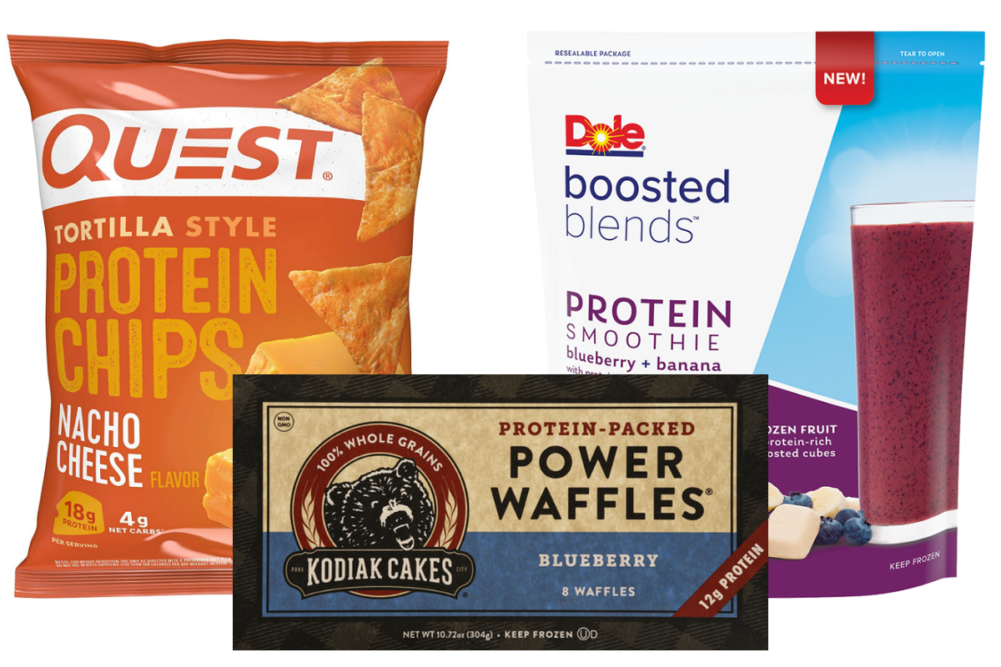CHICAGO — Quest Nutrition, a wholly owned business of The Simply Good Foods Co., Denver, built its product portfolio on the promise of using complete dairy-based proteins for a full amino acid profile. Quest started incorporating dairy proteins into bars in 2010 and within 10 years expanded into cookies, chips, frozen pizza, shakes and, most recently, chocolate confections. Quest Nutrition exists because of the versatility and nutrient density of dairy ingredients.
The same is true of GoodSport Nutrition, a Chicago-based startup that is introducing a namesake sports drink that is 97% dairy and aims to compete nationally against leading isotonic brands. GoodSport is a clear, naturally colored, shelf-stable beverage that comes in 16.9-oz bottles in four flavors: citrus, fruit punch, lemon lime and wild berry. Michelle McBride, founder and chief operating officer, conceived the concept after being frustrated with the sports drink category options.
“I didn’t want my son drinking sports drinks filled with artificial ingredients that were being offered to him at his baseball games,” Ms. McBride said. “I gave him chocolate milk as a healthier alternative after his workouts, and it provided the inspiration to look at milk as a source of hydration during physical activity.”
Ms. McBride learned milk is packed with electrolytes and has the right balance of carbohydrates-to-protein to provide optimal hydration, so she set out to make a sports drink from milk. With assistance from the national dairy checkoff-funded Center for Dairy Research at the University of Wisconsin – Madison, Ms. McBride learned ultrafiltration may be used to remove milk’s protein and harness its electrolytes, vitamins and carbohydrates to create a clear beverage with a mouthfeel consumers expect from a sports drink. The part of the milk used to make GoodSport is called permeate.
Permeate is a co-product of the manufacture of dairy protein ingredients, namely whey protein concentrate, whey protein isolate, ultrafiltered milk, milk protein concentrate and milk protein isolate. Permeate is typically void of fat and has a high lactose content while also being a concentrated source of many varied minerals and non-protein nitrogen compounds, which gives it a salty taste.
 The sugar and minerals solution is similar to what isotonic manufacturers add as individual ingredients to a water base. Permeate inherently contains all of these hydration compounds.
The sugar and minerals solution is similar to what isotonic manufacturers add as individual ingredients to a water base. Permeate inherently contains all of these hydration compounds.
The permeate in GoodSport is ultrafiltered to remove all protein; however, because there may be some residual protein, anyone with a dairy allergy should avoid the beverage. The addition of the lactase enzyme converts lactose — a disaccharide unique to all mammalian milk — to the monosaccharides glucose and galactose, which are sweeter than lactose. The conversion, and the addition of some monk fruit and erythritol, allows for a no-added-sugar claim.
“GoodSport’s patent-pending formula delivers three times the electrolytes and 33% less sugar than traditional sports drinks,” Ms. McBride said. “All ingredients are from natural sources and the beverage provides a good source of calcium and an excellent source of B vitamins. It is lactose-free and shelf-stable.”
Ms. McBride said by using permeate, the company is contributing to the dairy industry’s sustainability story because it is rescuing the byproduct from being discarded, as until recent years, permeate mostly had been sold into the animal feed supply chain.
In addition to its new home in GoodSport, permeate now is used for its flavor-extending and sodium-reducing characteristics. That’s because the minerals content of permeate makes it possible to reduce added salt in some product formulations, including baked foods, condiments and processed meats.
“Use may allow for a reduction of sodium chloride in baked goods,” said Kimberlee Burrington, director – training, education and technical development, American Dairy Products Institute, Elmhurst, Ill., who formerly worked at the Center for Dairy Research and assisted Ms. McBride on the development of GoodSport. “In general, 10 to 11 grams of permeate will replace 1 gram of salt.
“Permeate has been shown to contribute to browning of baked goods because of its high lactose content. The lactose also helps retain moisture in baked goods. Specifically, the lactose content in dough produces bread that retains its softness for a longer period of time and extends shelf life.”
When most consumers think of dairy, the first things that come to mind are butter, cheese, ice cream, milk and yogurt. But the dairy industry is much larger, with dairy ingredients a big business domestically and in imports.
Dairy ingredients typically are dried forms of various viscous dairy streams. Some are simple products, others, through the use of isolation and purification technologies, are concentrated sources of various milk constituents.
The most current data available from the US Department of Agriculture showed production of milk-based dairy ingredients to be 3.65 billion lbs in 2019, an increase of 92.1 million lbs. This includes an estimated 109 million lbs of milk permeate. Nonfat dry milk and skim milk powder, the two most basic ingredients, comprise two-thirds of production. Their most common domestic application (nearly 60%) is to go back into dairy products, followed by confections, prepared mixes and dry blends, baking and infant formula, according to ADPI.
“A key growth area is the snacks sector,” Ms. Burrington said. “Milk powder is also an important ingredient in coatings, seasonings, fillings, as well as a source of proteins.”
Some of the other milk-based ingredients have more specialized uses. Their composition influences their application.
“Milk protein concentrate and isolate, for example, are higher — usually much higher — in protein than simple dried milk ingredients,” Ms. Burrington said. “These ingredients are typically used in mainstream nutritional products and sports beverages. Dried buttermilk and whole milk powder, as the names suggest, are sources of milkfat and therefore are often used in ‘rich’ products, such as bakery, confections and desserts.”
Kodiak Cakes, Park City, Utah, prioritizes protein in many of its grain-based products. The Power Cakes flapjack and waffle mix, for example, includes whey protein concentrate and milk protein concentrate, along with buttermilk powder for a rich, homemade taste.
One of the company’s most recent introductions is a line of no-bake protein ball mixes. Available in dark chocolate and oat chocolate chip varieties, the dairy protein-enriched mix gets combined by the consumer with water, honey and nut butter and rolled into a dozen balls that have 10 grams of protein per serving.
The use of buttermilk powder in snack and ready-meal new product introductions increased by more than 20% and 40%, respectively, in 2019 as compared to 2018, according to ADPI. It also remains a popular flavor in the growing category of condiments.
The Hidden Valley Ranch brand from The Clorox Co., Oakland, Calif., has long relied on buttermilk ingredients for its range of condiments. That has not changed with its line of Secret Sauce drizzles, ready-to-eat shelf-stable dips, which also include whey and cheese powders, and Blasted dipping sauces.
 The Healthy Choice Plant Powered Dressings line from Conagra Brands, Chicago, includes a ranch variety. While the other three offerings make a dairy-free label claim, ranch relies on buttermilk and whey to achieve a desirable flavor profile.
The Healthy Choice Plant Powered Dressings line from Conagra Brands, Chicago, includes a ranch variety. While the other three offerings make a dairy-free label claim, ranch relies on buttermilk and whey to achieve a desirable flavor profile.
Other popular dairy ingredients are derived from whey, which once was thought of as the byproduct of cheesemaking. Today many processors are in the business of producing whey, selling the cheese to marketers who package and sell it in retail and foodservice.
During cheesemaking, casein proteins coagulate to make cheese curds. The whey proteins drain off and are used to make a range of dried dairy ingredients.
“Cows’ milk contains two basic categories of protein: casein and whey proteins,” Ms. Burrington said. “The two protein types have very different characteristics and behave differently under the same processing conditions. Caseins are very heat stable, while whey proteins are not. Whey proteins have very good solubility from pH 2 to 10, while caseins lose solubility at pH 4.6 or below.”
The USDA reported production of whey-based dairy ingredients in 2019 at 3.9 billion lbs, which was a decrease of 152 million lbs. This was in response to decreased exports, not domestic applications. In the United States, whey-based dairy ingredient utilization in human foods totaled 1.4 billion lbs in 2019, an increase of 15.8% from the previous year. Use was also up by 27% in animal feed, from 368.2 million lbs in 2018 to 469 million lbs in 2019. Sports bars and beverages, dairy foods, and nutritional products are the most popular applications.
Kellogg Co., Battle Creek, Mich., owner of the natural foods brand Kashi, now offers protein-packed frozen waffles as part of the Kashi GO line. Available in three flavors — cinnamon brown sugar, vanilla buttermilk and wild blueberry — one serving (two waffles) provides 13 grams of protein. The Non-GMO Project verified waffles rely on a blend of protein sources, including organic whey protein.





